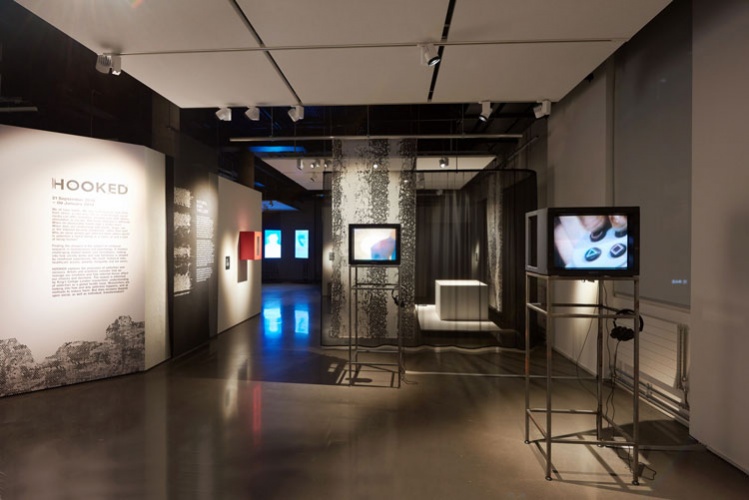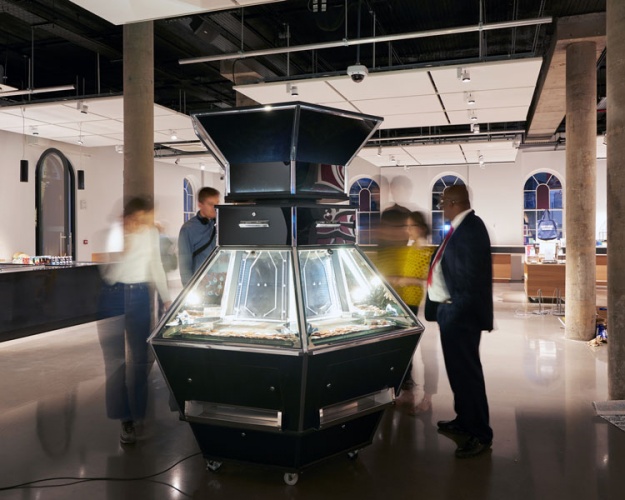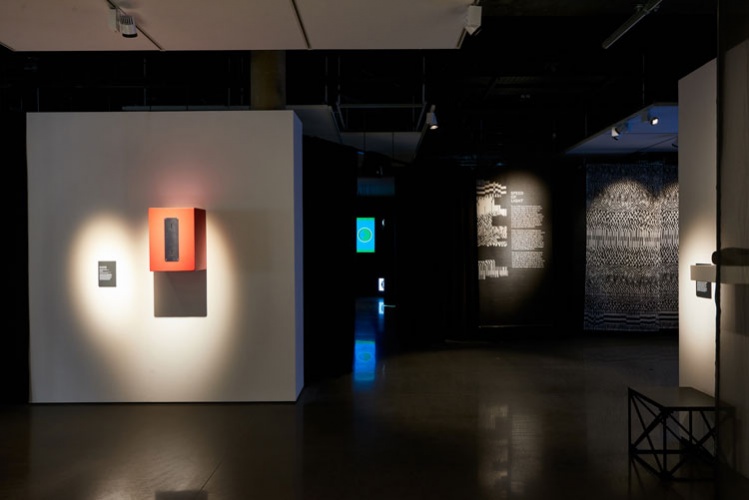What’s your vice? Science Gallery London explores addiction in opening show
A new gallery devoted to the intersection of science and art has opened with its first exhibition, Hooked, which delves into the psychology behind addictions, from drugs to gambling and technology.

A new exhibition on addiction developed by artists and scientists has been launched at the brand new Science Gallery London, which opened this weekend.
The new gallery is a project by King’s College London which is set inside a renovated space in the Grade-II listed Boland House, part of the King’s Guy’s campus in London Bridge,
It is part of the Global Science Gallery Network, which already has a gallery in Dublin and aims to have eight university-linked science galleries by 2020.
The inaugural exhibition in the new London gallery, Hooked, presents a series of mixed-media installations and displays which aim to take a fresh look at how we view addiction, according to curator, Hannah Redler Hawes.
She says: “The aim of the exhibition is to reframe the addiction and recovery debate and ask questions about the way that we consider addiction.
“Some see it as a moral crime, some see it as a legal issue, some as a health issue. Many scientists and thinkers in the field see it as a mix.

“We are trying to move it away from being a massively stigmatised or glamourised conversation but one that is an emotional human reality that needs to be reconsidered and challenged.”
The exhibit explores four main themes: natural born thrillers, speed of light, free will, and safe from harm. It includes installations, films and interactive content.
Natural born thrillers explores how as humans, we like to “expand our experiences and our emotional realm” according to Redler Hawes, and the different substances and behaviours that people engage with to do this.
Exhibits here include Sugar Rush, a coffee table made of sugar by Atelier 010 which dissolves when coffee is poured, as a comment on consumerism and objects that are designed to fail, according to the gallery.
The next three rooms respectively consider network culture and the potentially addictive effects of technology and mobile phones; the social constructs of addiction and how society and our environment influence addictions; and what happens when pleasure from addiction stops and turns into harm.
Notable works include a film by artist Dryden Goodwin working alongside King’s professor of addiction science Kim Wolff, who worked with a group of young men in prison for drug-related crime, to create poetry.

Redler Hawes says: “You get an insight into where they’re coming from. We explored their perception of drugs. They were told, imagine a drug is a person. Each poem starts with a phrase such as ‘My name is cocaine,’ and ends in ‘I can make you feel good.’”
Other pieces include a slot machine installation exploring how gambling sounds encourage people to keep betting and an installation by Katriona Beale called Entering the Machine Zone II, which encourages people to engage in a video game from a velvet chair, which highlights how data is harvested.
The exhibition has been designed by Nissen Richards studio, which split the exhibition into four main zones and designed both the 2D and 3D elements of the display.
Pippa Nissen, director at Nissen Richards, adds: “We wanted to create a bold identity for the exhibition that would bring out the themes of addiction both in the way that people go around the space, but also in the graphic approach. We used the design and graphics to convey a sense of repetition and distortion in the images and materials that we used, which mirrors the cyclical nature of the exhibition’s themes.”
Redler Hawes adds: “They identified that in addiction and recovery, it is a two-sided coin and they wanted to create an environment of contrasts that had some busy claustrophobic and clawing encounters and some more open and flowing moments.”
This was done with a series of opaque and transparent panels in different configurations, according to Redler Hawes, with the lighting supporting the “open and enclosed design metaphor” through areas of light and dark.

Black and white coloured curtains, some of which are patterned and some transparent are a key design feature. The monochrome colour palette is continued in the exhibition graphics and texts, which are presented in a sans-serif typeface, kept simple so as not to glamourise the subject, according to Redler Hawes.
The graphic poster for the exhibition at the front of the building is “fun and sophisticated” Redler Hawes says, with pictures for letters. “It is a graphic that interprets the substances and behaviours of addictions. The ‘H’ looks like three lines of cocaine, the ‘O’ is a cigarette puff, the ‘K’ is a crumbly bit of chocolate and another ‘O’ has a smiley emoji.”
Redler Hawes says one thing that makes the gallery unique is the “commitment to approach work from scientists and artists in parallel” – exploring issues with both these groups concurrently “is new at this scale for London and really exciting”, she adds.
In terms of the inaugural exhibition, for example, she says it is “looking at addiction through the sciences and the arts simultaneously, so we are getting a psychological scientific and a cultural perspective on the question.”

The gallery will not have a permanent collection, but instead have seasons of changing exhibitions.
Its core target audience is people aged 15 to 25 – though all ages are welcome. A group of young leaders has been appointed who will help to inform the programme and suggest themes of interest. It was this group that suggested looking into people’s relationships with phones and gaming as part of Hooked, according to Hawes.
The refurbishment of the building and the interiors of the new Science Gallery London have been designed by architectural practice LTS, which repurposed the space to suit a contemporary gallery setting, while retaining many of its original features according to LTS. Historically, the building was a hospital wing of the 18th century Guy’s Hospital and more recently, it housed a McDonald’s restaurant.
The space has three large, interconnected gallery spaces, with no walls between them, as well as a studio space, a shop, a café, and a theatre, which will be used for lectures and performances.

The outside car park has been transformed into a public space with seating, reimagined as a Georgian Courtyard.
The gallery, which replaces a McDonalds on the site, has been supported and funded by the Wellcome Trust and Guy’s and St Thomas’ Charity.
Hooked: When Want Becomes Need is open until 6 January 2019 at Science Gallery London, Great Maze Pond, London SE1 9GU. Entry to the exhibition is free. A series of talks and events accompany the exhibition. For more information, head here.


-
Post a comment




